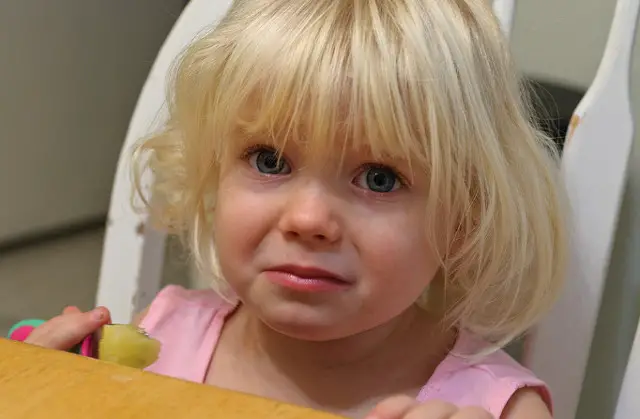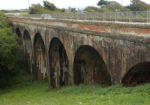The End Child Poverty coalition has published figures today (Wednesday) revealing that the number of children living in poverty on the Isle of Wight has increased since November 2016.
The latest figures show that 7,629 children (29.49% after housing costs) on the Isle of are living in poverty.
This is a rise of 176 children since November 2016, when 7,453 Isle of Wight children (28.53%) were reported by the coalition to be living in poverty.
Area breakdown
Once again Ventnor West and Ventnor East have the highest proportion of children living in poverty (after housing costs). Nettlestone and Seaview has the lowest.
Use the interactive table below to find out how your area compares with others on the Island.
| Children per ward in poverty, July-Sept 2017 | Number (After Housing Costs) | % |
|---|---|---|
| Isle of Wight | 7,629 | 29.49 |
| Arreton and Newchurch | 90 | 16.37 |
| Binstead and Fishbourne | 61 | 12 |
| Brading, St Helens and Bembridge | 334 | 31.95 |
| Carisbrooke | 252 | 31.50 |
| Central Wight | 98 | 19.07 |
| Chale, Niton and Whitwell | 138 | 32.95 |
| Cowes Medina | 288 | 25.28 |
| Cowes North | 123 | 26.20 |
| Cowes South and Northwood | 107 | 14.90 |
| Cowes West and Gurnard | 73 | 13.88 |
| East Cowes | 244 | 27.26 |
| Freshwater North | 106 | 27.82 |
| Freshwater South | 147 | 33 |
| Godshill and Wroxall | 169 | 31 |
| Havenstreet, Ashey and Haylands | 166 | 21.89 |
| Lake North | 241 | 31.88 |
| Lake South | 138 | 31.01 |
| Nettlestone and Seaview | 34 | 10.83 |
| Newport Central | 208 | 26.31 |
| Newport East | 380 | 42.65 |
| Newport North | 111 | 18.32 |
| Newport South | 322 | 36.97 |
| Newport West | 110 | 14.53 |
| Parkhurst | 209 | 24.96 |
| Ryde East | 210 | 29.33 |
| Ryde North East | 184 | 35.63 |
| Ryde North West | 177 | 33.37 |
| Ryde South | 502 | 40.78 |
| Ryde West | 320 | 35.11 |
| Sandown North | 133 | 21.52 |
| Sandown South | 317 | 35.60 |
| Shanklin Central | 238 | 36.12 |
| Shanklin South | 155 | 32.56 |
| Totland | 96 | 22.41 |
| Ventnor East | 205 | 43.09 |
| Ventnor West | 267 | 48.51 |
| West Wight | 110 | 23.96 |
| Whippingham and Osborne | 307 | 33.57 |
| Wootton Bridge | 112 | 21.15 |
Island not immune from “unjust and unequal society”
Island Labour Parliamentary Spokesperson, Julian Critchley, said
“Some Islanders may find these statistics shocking. Some may look away from an excellent piece of reporting, not wanting to accept the situation their political choices have led us to. Yet they should be forced to look. There must be no hiding place for the consciences of those who have created this situation.
“The Island is often seen by outsiders as a prosperous and settled slice of “middle England”. Yet we on the Island are not immune from the unjust and unequal society which has been created in this country by Conservative policies. Nearly one in three of all children on the Island are living in poverty. Hundreds live in ‘hidden poverty’ even in outwardly prosperous places like my own ward of Ryde North West.
“Yet the harm being caused to our children doesn’t stop there. What is not recorded in these figures is that the poorest and most vulnerable children are also most heavily affected by the cuts to public services in schools and the NHS. For them, under Conservative cuts, the situation is destined to get even worse.
“This report should be a matter of shame for this Government, and for the Conservative Party whose policies have condemned our children to poverty. Our children deserve better than this.”
Growth of child poverty not acceptable
Nick Belfitt, Isle of Wight Liberal Democrat Parliamentary spokesperson said,
“These stats show the clear damage the current government administration is putting onto children. As a teacher, I know that poverty in young children can affect their development right into their later years and it can mean these young people losing out on any kind of future. More has to be done to protect children, children’s services and other youth services.
“The growth of child poverty is not acceptable and we have to do more to provide support and make sure all children are protected. Programmes like free school meals being raised up to secondary levels and additional support for working class families are some of the ways this government should be supporting children rather than pulling away the most basic needs.
“The Island has shown again it’s at a difficult position compared to the better-funded and supported South East region it is lumped with. We need Westminster to recognise what is happening here to help give these children a future.”
Comparison within the region
Although child poverty on the Isle of Wight and in the South East region are not as high as other areas in the UK, there are still places where significant numbers of children live below the poverty line.
The parts of the South East with the highest percentage of children living in poverty include:
| Kent – Thanet | 34.7% |
| East Sussex - Hastings | 33% |
| Hampshire - Portsmouth | 30.7% |
| Berkshire - Slough | 29.8% |
| Isle of Wight | 29.5% |
| Oxford | 26.4% |
| Buckinghamshire – Milton Keynes | 25.5% |
| West Sussex – Crawley | 25.5% |
| Surrey – Spelthorne | 17.9% |
End the freeze on children’s benefits
As price rises risk pushing ever larger numbers of children below the poverty line, the coalition is calling on the Chancellor to end the freeze on children’s benefits – currently in place until the end of the decade – so that families no longer see living standards squeezed as prices rise.
The local child poverty estimates are broken down by parliamentary constituency, local authority and ward. Child poverty is the highest in large cities, particularly in London, Birmingham and Manchester. Among the twenty parliamentary constituencies with the highest levels of childhood poverty, seven are located in London, three in Birmingham, and three in Manchester.
Since the introduction of the benefit freeze, the End Child Poverty coalition, which includes charities, faith groups and unions, has warned that as prices rise, low income families would find it increasingly hard to pay for the same basic essentials.
Anna Feuchtwang, Chief Executive of the National Children’s Bureau said:
“Poverty can hold children back in many different ways. It can mean children don’t reach a good level of health or development, do well in school or reach their potential in employment.
“The Government has pledged action through its social mobility policy, but the scale of child poverty that this new data reveals, means we urgently need a wider commitment from across Government to improve the living standards of children, young people and families. In particular, we need action to address the devastating impact of benefit cuts on families, including those with disabled children, many of whom are struggling to make ends meet.”
The coalition is also concerned that the impact of poverty may be exacerbated by a poverty premium – which means that low income families can face paying as much as £1700 per year more than better off families, to buy the same essential goods and services. A major contributor to this is the high cost of credit for low income families, and the coalition wants to see the Government address this by providing better access to interest free credit.
Thanks to Steve Butler for the heads-up.
Article edit
1. Comment added from Julian Critchley
2. Comment added from Nick Belfitt





